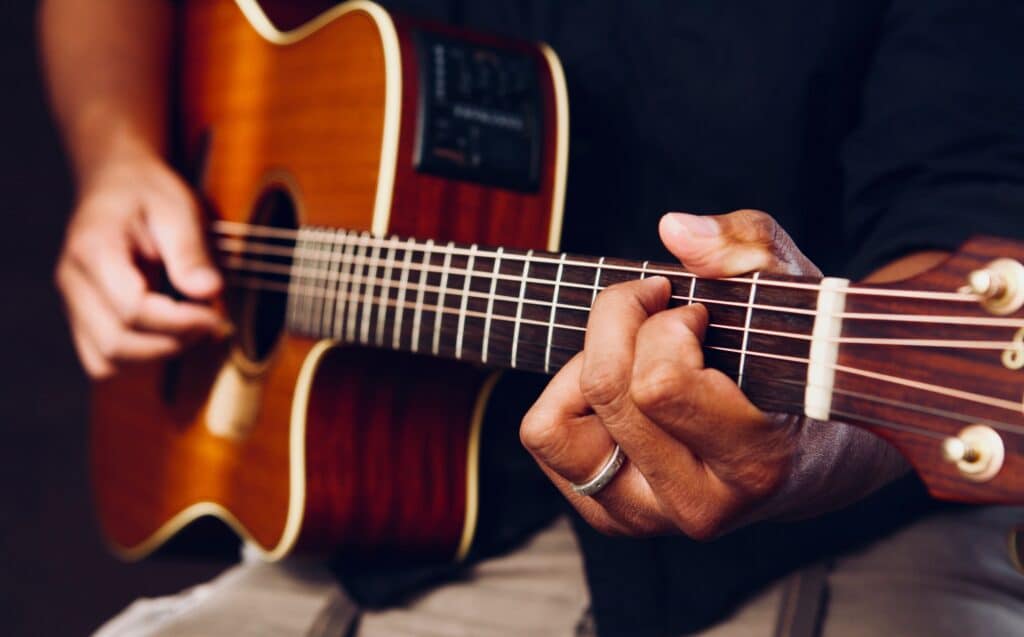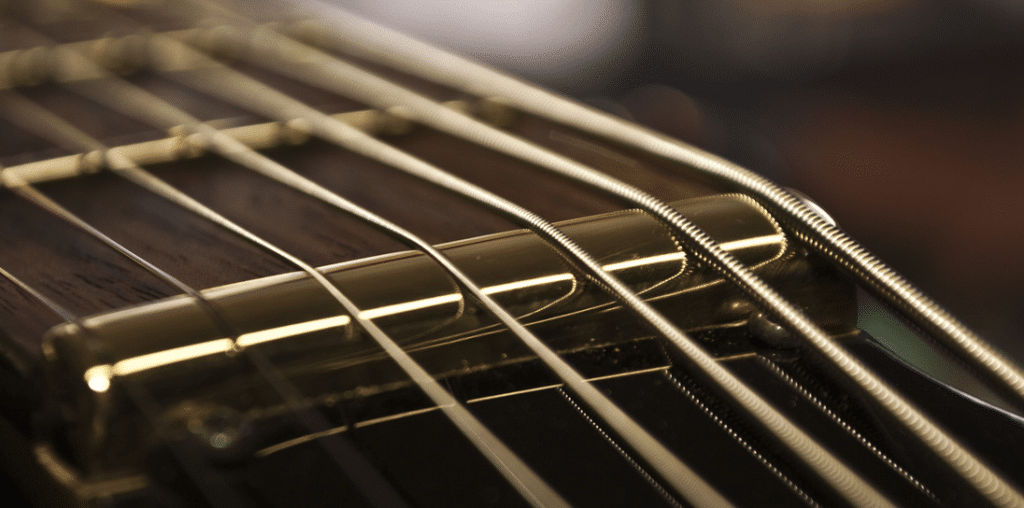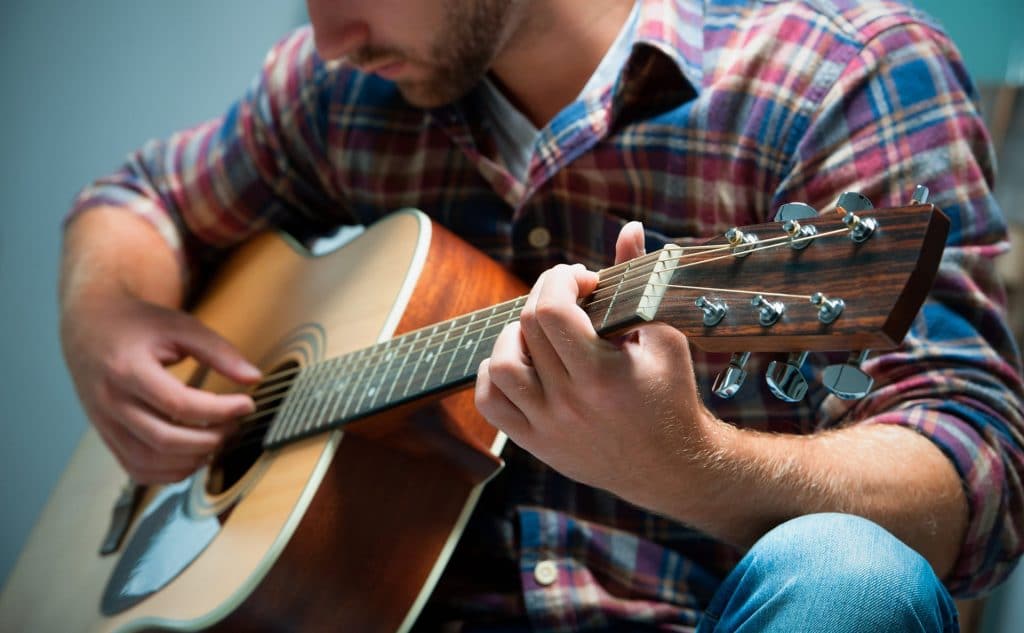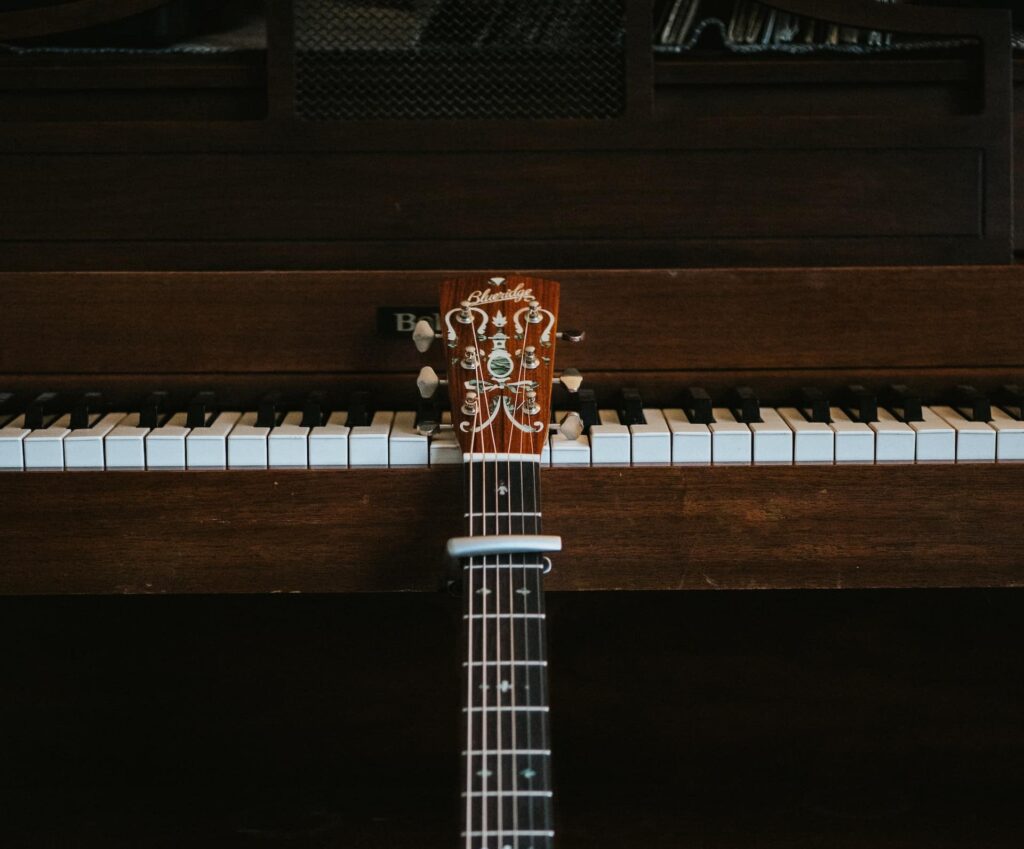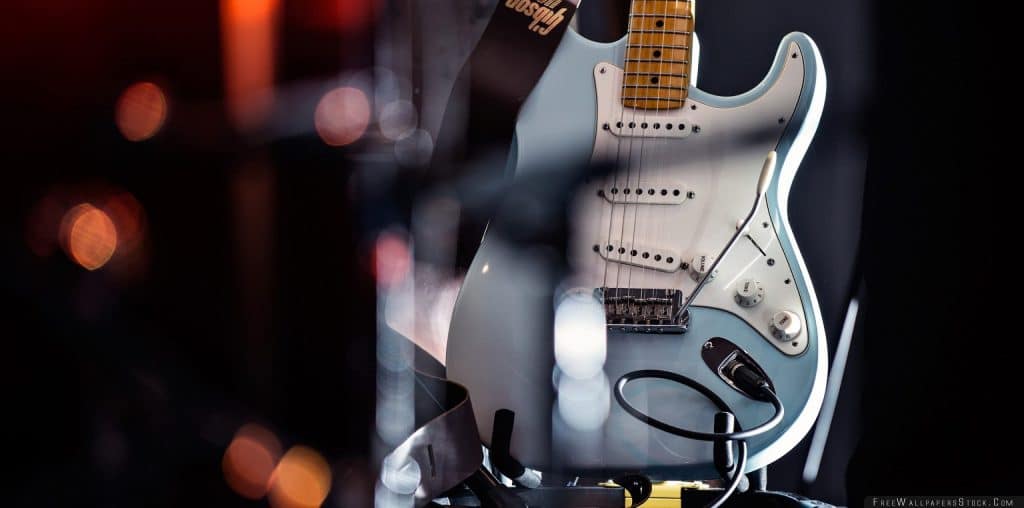Let’s sound anew – what to expect from budget guitars
If you’re on a budget, you might think that you won’t be able to afford a high-quality guitar. Fortunately for under $500, you can still get great guitars that are worthy of playing live on stage.
These guitars are designed with better quality, better tone, dressed with rosettes, abalone accents, and quality wood grains.
Whether you’re a beginner or if you’re on a budget, these guitars will be great picks.
Shape it up – acoustic guitar body styles
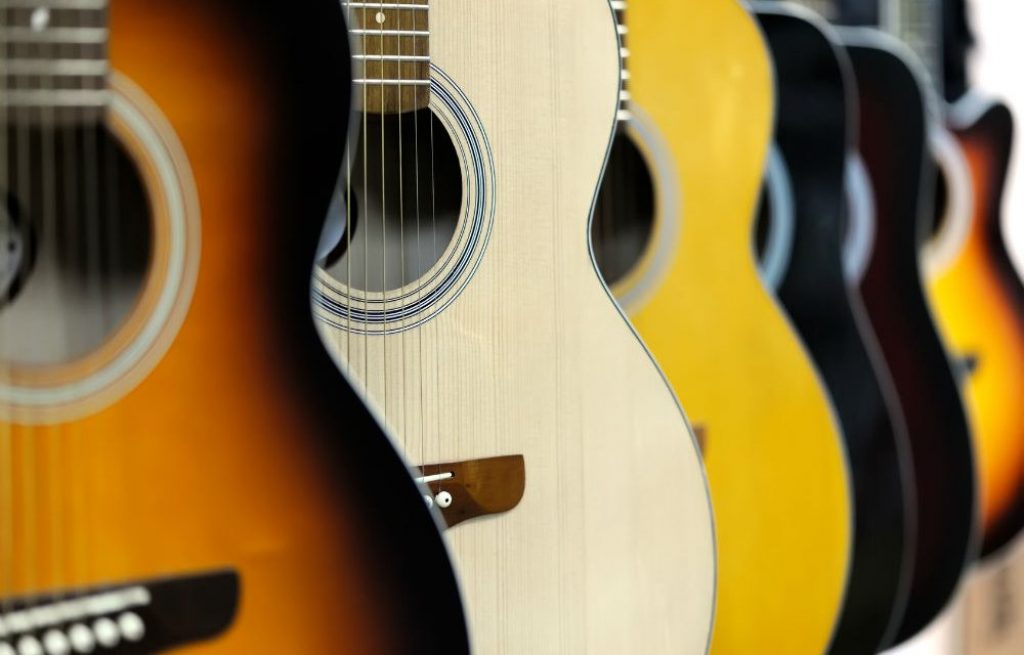 To help you learn your way around an acoustic guitar, here are a few types of acoustic guitar body styles:
To help you learn your way around an acoustic guitar, here are a few types of acoustic guitar body styles:
- Parlor Guitars: One of the smallest sizes, these guitars are light in weight and produce a balanced and focused sound. You should look into investing in a parlor guitar if you want to get into fingerpicking.
- Concert/Model “O” Guitars: For a balanced tone, these guitars are a bit bigger than the parlor type. They are great models for fingerpicking and produce deep bass tones.
- Grand Concert/Model “OO” Guitars: For an even bigger size but with the shape of a classical guitar, this model is extremely quiet, with its solid mid-range feel to get that perfect balance between bright and boomy.
- Orchestra Model/Grand Auditorium/Model “OM” or “GA” Guitars: Defined as a mid-size guitar, it doesn’t project much heavy base but still has a large amount of projection. You should invest in this particular style for solo play.
- Dreadnought: Like the Yamaha FG840, the dreadnought is one of the most common shapes. It is large in size, with a load of bass response, and perfect for strummers and singer-songwriters,
- Jumbo and Super-Jumbo Guitars: If you want the biggest kind of guitar, this style is the perfect size. These super-sized guitars have a large amount of bass response. It is perfect for country music.
Acoustic guitar maintenance tips
To keep an acoustic guitar performing optimally, here are some maintenance tips:
- Keep it in a consistent temperature and humidity: The temperature and humidity can affect your instrument. Keep your guitar in the case, use a humidifier, and use air conditioning.
- Keep it clean: You don’t need to clean the guitar using any sort of harmful chemicals. Clean your guitar with a soft and damp cloth—but make sure it isn’t wet. If you want to use polish, opt for one without silicone compounds. Avoid polishing the fingerboard or bridge.
- Keep it in its case: To try and avoid scratches or nicks of any kind, being gentle and keeping your guitar in your case when not in use or when traveling is the best.
Consider the following features to choose the perfect acoustic guitar under $500
To choose the perfect acoustic guitar, here are the most important features:
Tonewood
The wood can make a huge difference when it comes to sound and playing style.
In just one guitar, the top, the back, the neck, and the sides can be all different types of wood—with the combinations making extremely different types of sound.
Here are a few of the types of wood:
- Spruce
- Cedar
- Mahogany
- Maple
- Rosewood
Body
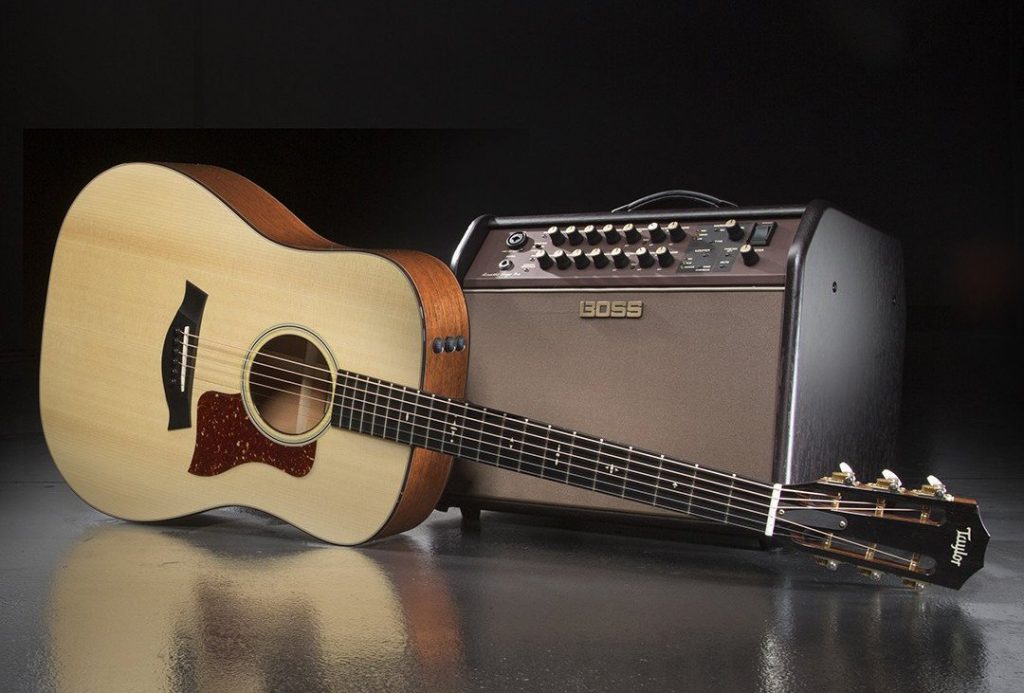 The body shape also makes a huge difference in the type of sound you get when you play. The different components of the body are the top—which is also known as the soundboard, the internal bracing, the sides, and the back. The guitar then goes on to the upper bout, the hollow body, and the lower bout.
The body shape also makes a huge difference in the type of sound you get when you play. The different components of the body are the top—which is also known as the soundboard, the internal bracing, the sides, and the back. The guitar then goes on to the upper bout, the hollow body, and the lower bout.
Neck
As we just mentioned, the neck is one of the vital parts of the guitar. It is the section that joins the body to the headstock. You will need the neck to access the fretboard, which will be where you actually play the guitar.
When it comes to acoustic guitars, you’ll most likely see a set neck, which can hold up to 20 frets, like the Epiphone DR-100. This set neck is actually glued onto the body.
Another type of neck is the bolt-on neck (which will normally be found on an electric guitar).
Since the neck is configured onto the body—whether by being glued or through the bolt—this will help prevent it from bowing and twisting.
Scale length
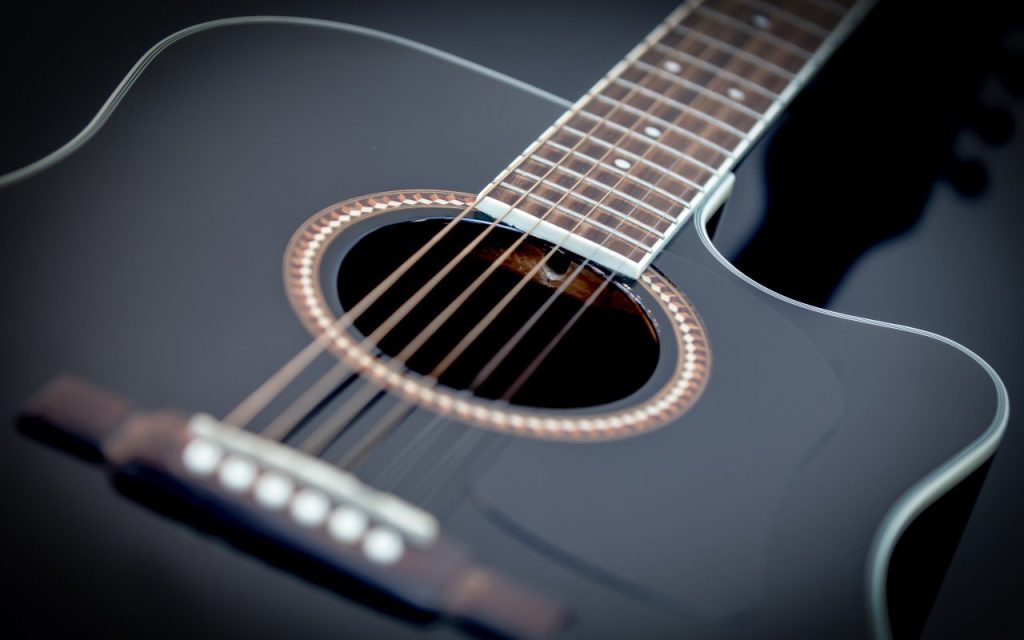 The scale length of the guitar will vary in thickness and width, and actually the size of the guitar itself. Even though the length will differ from guitar to guitar, the measurement actually does not affect the sound. Instead, it has a major effect on the comfort level that you have with your guitar.
The scale length of the guitar will vary in thickness and width, and actually the size of the guitar itself. Even though the length will differ from guitar to guitar, the measurement actually does not affect the sound. Instead, it has a major effect on the comfort level that you have with your guitar.
As we just mentioned, some common, acoustic guitars will have 12-14 frets, like the Ibanez PN15, however, it can reach out to be 20 frets. If you have smaller hands, a shorter neck with fewer frets can make it much easier to play (and learn).
Bridge
One of the most iconic symbols in a guitar that you can recognize—even if you aren’t a musical artist, is the sound hole. The bridge, another part of the guitar, can be located according to the location of the sound hole—it’s right below it.
The bridge is responsible for keeping the strings in place and helping transport that sound from the vibrations to the soundboard and then into the air around.
The bridge also comes with bridge pins, which is where the strings are anchored. You’ll find that some pins are made of plastic while others are made of ebony.
Strings
 Normally, most beginners are advised to start with nylon strings on their guitar because they are often conceived as being easy to play and easy on the fingers. However, some guitars don’t come compatible with nylon strings so actually, at the end of the day, you need to choose strings based on compatibility—from the guitar to yourself.
Normally, most beginners are advised to start with nylon strings on their guitar because they are often conceived as being easy to play and easy on the fingers. However, some guitars don’t come compatible with nylon strings so actually, at the end of the day, you need to choose strings based on compatibility—from the guitar to yourself.
Nylon strings will often produce a much softer tone. Steel strings, on the other hand, will produce a brighter, louder tone (one often associated with acoustic guitars).
If you’re a leftie, you need to restring the guitar you purchase all by yourself. However, there’re special left-hand acoustic guitars that don’t require any additional efforts on your part.
Accessories
It is important to know what you’re getting included with your purchase. A few accessories that are available with a guitar package, like the Yamaha FG840 are picks, a strap, a set of strings, a book, and even a capo. The more accessories included with your purchase—the better!
Warranty
Only one of these guitars on this guide comes with a lifetime limited warranty, the Epiphone DR-100. The rest of the guitars, including the majority of guitars on the market, will only come backed with a 2-year guarantee—which is normal for this budget.






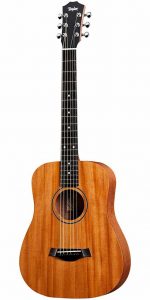

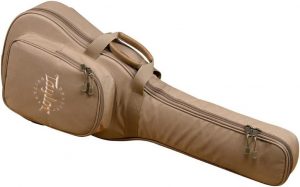
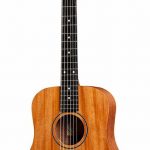

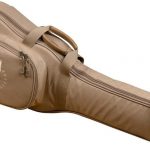

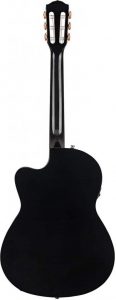

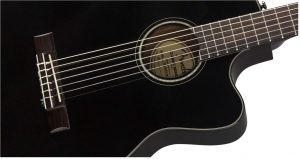
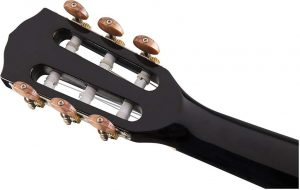
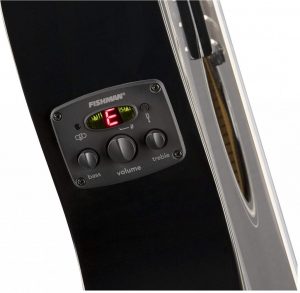


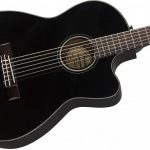
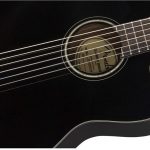
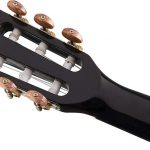
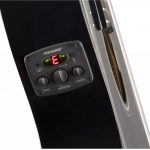


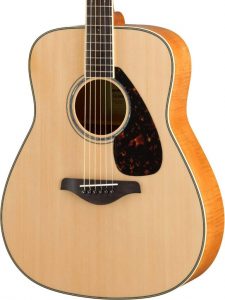
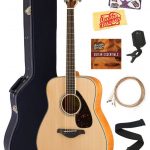
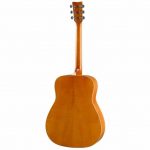
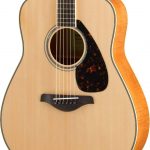
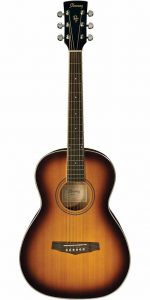
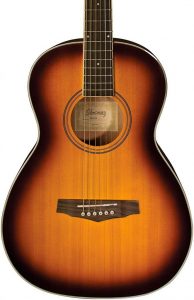
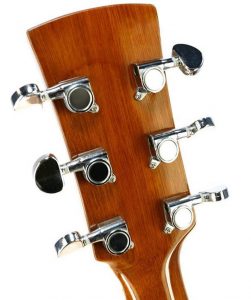
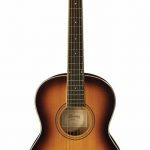
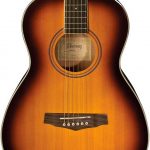
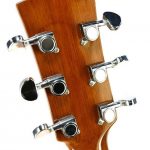
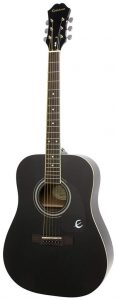
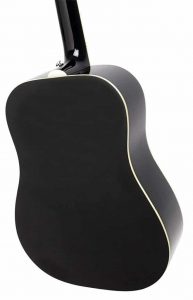

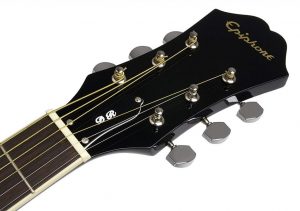
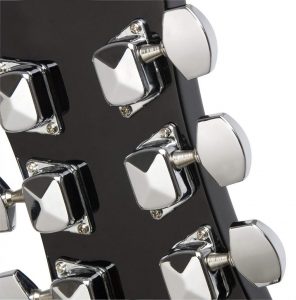
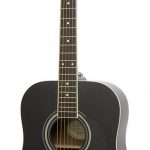
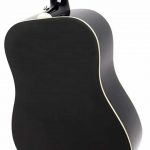
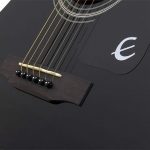
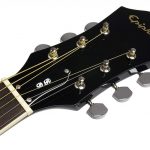
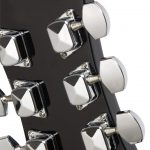
 To help you learn your way around an acoustic guitar, here are a few types of acoustic guitar body styles:
To help you learn your way around an acoustic guitar, here are a few types of acoustic guitar body styles: The body shape also makes a huge difference in the type of sound you get when you play. The different components of the body are the top—which is also known as the soundboard, the internal bracing, the sides, and the back. The guitar then goes on to the upper bout, the hollow body, and the lower bout.
The body shape also makes a huge difference in the type of sound you get when you play. The different components of the body are the top—which is also known as the soundboard, the internal bracing, the sides, and the back. The guitar then goes on to the upper bout, the hollow body, and the lower bout. The scale length of the guitar will vary in thickness and width, and actually the size of the guitar itself. Even though the length will differ from guitar to guitar, the measurement actually does not affect the sound. Instead, it has a major effect on the comfort level that you have with your guitar.
The scale length of the guitar will vary in thickness and width, and actually the size of the guitar itself. Even though the length will differ from guitar to guitar, the measurement actually does not affect the sound. Instead, it has a major effect on the comfort level that you have with your guitar. Normally, most beginners are advised to start with nylon strings on their guitar because they are often conceived as being easy to play and easy on the fingers. However, some guitars don’t come compatible with nylon strings so actually, at the end of the day, you need to choose strings based on compatibility—from the guitar to yourself.
Normally, most beginners are advised to start with nylon strings on their guitar because they are often conceived as being easy to play and easy on the fingers. However, some guitars don’t come compatible with nylon strings so actually, at the end of the day, you need to choose strings based on compatibility—from the guitar to yourself.




